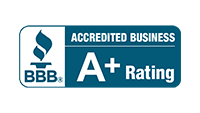
Search engine optimization (SEO) drives organic website traffic and improves rankings. But how do you measure the success of your SEO efforts? By tracking the right SEO key performance indicators (KPIs), you can gain insights into the performance of your SEO strategy and make data-driven decisions to optimize your website for better results.
In this blog post, we’ll explore the top SEO KPIs that every business should track to measure the effectiveness of their SEO efforts.
Organic Traffic
Organic traffic is the number of visitors that visit your website through organic search engine results. This KPI is essential for measuring the success of your SEO strategy because it indicates how well your website ranks in search engine results pages (SERPs).
To track organic traffic, use Google Analytics or other web analytics tools to monitor the number of visitors to your website from organic search results. A high level of organic traffic indicates that your website ranks well in search engines, while a low level suggests you need to improve your SEO strategy.
Keyword Rankings
Keyword rankings measure the position of your website in SERPs for specific keywords or phrases. This KPI is important for tracking your SEO efforts’ progress and identifying improvement areas.
To track keyword rankings, use SEO tools like SEMrush or Ahrefs to monitor the position of your website in search results for specific keywords. A high keyword ranking indicates that your website ranks well for relevant search queries. At the same time, a low keyword ranking suggests optimizing your website for better search engine visibility.
Click-Through Rate (CTR)
Click-through rate (CTR) measures the percentage of users who click on your website’s link in SERPs. CTR is important because it indicates how well your website’s title and meta description entice users to click through to it.
To track CTR, use Google Search Console or other SEO tools to monitor the click-through rate of your website’s pages in search results. A high CTR indicates that your website’s title and meta description are engaging and relevant to user search queries. Conversely, a low CTR suggests improving our website’s titles and descriptions to improve click-through rates.
Bounce Rate
Bounce rate measures the percentage of visitors who leave your website after viewing only one page. This KPI is important for understanding how engaging and relevant your website’s content is to users.
To track the bounce rate, use Google Analytics or other web analytics tools to monitor the percentage of visitors who leave your website after viewing only one page. A low bounce rate indicates that your website’s content is engaging and relevant to users, while a high bounce rate suggests that you need to improve your website’s content to keep users engaged.
Conversion Rate
Conversion rate measures the percentage of visitors who complete a desired action on your website, such as filling out a form or purchasing. This KPI is important for tracking the success of your SEO efforts in driving user engagement and business results.
To track conversion rates, use web analytics tools to monitor the percentage of visitors who complete a desired action on your website. A high conversion rate indicates that your website’s content and user experience effectively drive user engagement and business results. In contrast, a low conversion rate suggests that you need to optimize your website’s content and user experience to improve conversions.
Backlinks
Backlinks are links from other websites to your website. Backlinks are important for SEO because they signal to search engines that your website is authoritative and relevant to specific topics or keywords.
To track Backlinks, use SEO tools like SEMrush or Ahrefs to monitor the number and quality of backlinks to your website. A high number of high-quality backlinks indicates that your website is authoritative and relevant in the eyes of search engines, while a low number of backlinks suggests that you need to build more high-quality backlinks to improve your website’s SEO.
Conclusion
By tracking these top SEO KPIs, you can gain insights into your SEO strategy’s effectiveness and identify improvement areas.
With these insights, you can make data-driven decisions to optimize your website for better search engine rankings, traffic, and conversions and ultimately drive business results. Anyone can look at an upward trending graph and say, “Sure, that looks good to me!” But we’ve been around enough to know that appearances can be deceiving. Contact us today to see how we can help you achieve your goals.





